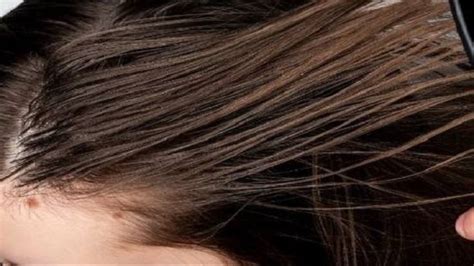Introduction: The Wonders of the Hair Hat
The hair hat, a creative concept combining the functionality of a hat with the allure of your own hair, offers a myriad of possibilities for fashion, convenience, and self-expression. According to the American Academy of Dermatology, humans shed an average of 50 to 100 hairs per day, amounting to over 1,800 hairs per month. Rather than letting these precious strands go to waste, the hair hat ingeniously repurposes them, transforming them into a stylish and eco-friendly headpiece.

Unlocking the Potential: 1001 Applications
The versatility of the hair hat knows no bounds. It can serve as:
1. Sustainable Fashion:
– Recycle hair into a unique and environmentally conscious accessory.
– Reduce textile waste and contribute to sustainable practices.
2. Hair Loss Concealment:
– Provide discreet coverage for those experiencing hair loss due to medical conditions or aging.
– Enhance confidence and reduce anxiety related to thinning hair.
3. Thermal Insulation:
– Utilize natural insulation properties of hair to keep you warm in winter.
– Create cozy and stylish headwear for outdoor activities.
4. UV Protection:
– Protect your scalp from harmful UV rays by blocking direct sunlight.
– Offer natural sun protection without the need for chemical sunscreens.
5. Hair Styling Helper:
– Create voluminous hairstyles by pinning the hair hat over natural hair.
– Achieve intricate and avant-garde looks with ease.
6. Accessory Organizer:
– Store jewelry, hair accessories, or other small items inside the hollow space of the hair hat.
– Keep essentials close at hand while making a fashion statement.
7. Artistic Expression:
– Utilize hair as a unique medium for artistic creations.
– Design intricate patterns, sculptures, or wearable art pieces.
8. Hair Growth Accelerator:
– Stimulate hair growth by massaging the scalp with the hair hat.
– Improve blood circulation and promote healthy hair follicles.
Types of Hair Hats
The hair hat can be constructed from various types of hair, including:
- Human Hair: Natural and realistic, providing seamless integration with your own hair.
- Synthetic Hair: Available in a wide range of colors and textures, offering endless customization options.
- Animal Hair: Such as horsehair or alpaca wool, offering unique textures and warmth.
Creating Your Own Hair Hat: A Step-by-Step Guide
Materials:
- Hair clippings or extensions
- Needle and thread or hair extension adhesive
- Hat base or headband
- Fabric glue (optional)
Instructions:
- Gather Hair: Collect your own hair clippings or purchase hair extensions in your desired color and texture.
- Prepare Hair: Wash and dry the hair thoroughly. Brush it to remove tangles.
- Attach Hair: Using a needle and thread or hair extension adhesive, secure the hair to the hat base or headband. Start by attaching the hair at the back and work your way towards the front.
- Secure Edges: Use fabric glue to reinforce the edges of the hair hat and prevent shedding.
- Style: Shape and style the hair as desired. You can use hairspray or other styling products to hold the hair in place.
Common Mistakes to Avoid
- Overloading Hair: Avoid attaching too much hair to the hat base, as it can weigh down the head and cause discomfort.
- Uneven Distribution: Ensure that the hair is distributed evenly around the hat base to create a balanced look.
- Poor Quality Hair: Avoid using low-quality hair that is prone to tangles or shedding. This can compromise the durability and appearance of the hair hat.
- Inadequate Attachment: Make sure the hair is securely attached to the hat base to prevent it from falling off.
- Over-Customization: While the hair hat offers endless customization options, avoid making drastic changes that may alter its functionality or aesthetic appeal.
Effective Strategies for Maintenance
To prolong the lifespan and beauty of your hair hat:
- Regular Cleaning: Wash the hair hat gently with lukewarm water and shampoo, then allow it to air dry.
- Detangling: Use a wide-toothed comb or brush to gently detangle the hair after washing.
- Storage: Store the hair hat in a cool and dry place, away from direct sunlight.
- Regular Repair: Inspect the hair hat periodically for any loose strands or damage, and make repairs as necessary.
- Professional Care: Consider having the hair hat professionally cleaned and conditioned every few months to maintain its optimal condition.
Tables for Reference
| Hair Type | Advantages | Disadvantages |
|---|---|---|
| Human Hair | Natural appearance, seamless integration | Can be expensive, requires regular maintenance |
| Synthetic Hair | Wide range of colors and textures, affordable | May look artificial, less durable than human hair |
| Animal Hair | Unique textures, warmth | Can be coarse or difficult to style, may require special care |
| Application | Benefits | Limitations |
|---|---|---|
| Fashion Accessory | Stylish, unique, environmentally friendly | May not be suitable for all occasions or outfits |
| Hair Loss Concealment | Discreet, boosts confidence | Can be bulky or uncomfortable for extended wear |
| Thermal Insulation | Keeps you warm, eco-friendly | May be too warm for some climates or activities |
| Hair Styling Helper | Volumizes, creates intricate looks | May damage or tangle natural hair if not used properly |
Conclusion: Embrace the Magic of the Hair Hat
The hair hat empowers you to embrace the beauty and versatility of your locks in a way that is both sustainable and stylish. By repurposing your own hair, you can create a unique and eco-conscious accessory that serves a multitude of functions. From fashion statement to hair loss solution, the hair hat offers endless possibilities for self-expression and convenience. With careful maintenance and innovative thinking, you can unlock the full potential of this extraordinary headpiece.
